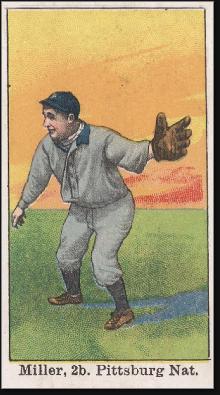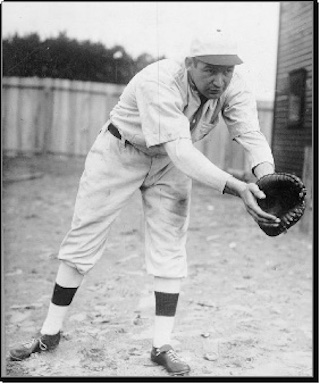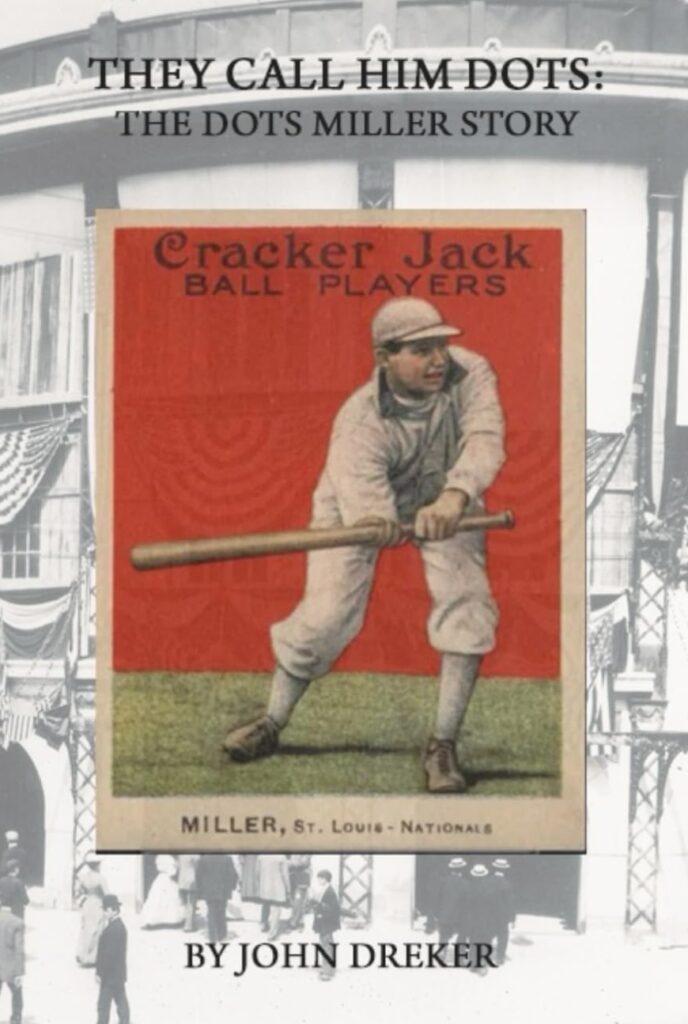
Sport: Baseball
Born: September 9, 1886
Died: September 5, 1923
Town: Kearny, New Jersey
John Bernard Miller was born September 9, 1886 in New York City and grew up in Kearny, NJ. The Millers were a German-American clan in a principally Scotch-Irish town, where soccer trumped baseball as the boyhood game of choice. Nevertheless, Jack excelled in the latter. An agile fielder and solid hitter, he was plucked from local baseball leagues at age 21 by the Easton club of the Atlantic League. Within a year, he was a member of the Pittsburgh Pirates, where he is said to have earned his nickname “Dots” during Spring Training in 1909. A reporter supposedly asked Honus Wagner who the young man backing him up at shortstop was. Wagner replied in his German accent, “Dots Miller.”
The real story, recently unearthed by sports author John Dreker, is that the Miller family had been calling him “Dots” since he was a toddler. Jack (or Barney, as he was sometimes called) was a possessive little boy who laid claim to various objects with the declaration, “That’s mine.”
Which came out Dot’s mine.
Dots enjoyed a fine rookie season with Pittsburgh. He supplanted Ed Abbaticchio, an early pro football star, as the regular second baseman and—batting behind Tommy Leach, Fred Clarke and Wagner—finished third in the NL with 87 RBIs. Dots finished in the Top 10 in hits, doubles, triples and slugging. He also distinguished himself as the top fielder at his position. In the 1909 World Series, Dots contributed four more RBIs against the Detroit Tigers, including a two-run single in Game 7, which the Pirates won.
Dots used his newfound fame (and winning series share) to open a fabulous hotel back in Kearny, the Parkway Tavern. His sister’s child, Jack Tighe, was born there. Tighe went on to manage the Tigers in the 1950s.
Dots continued to be a solid run-producer and exceptional fielder. In 1912, the Pirates moved him to first base in order to get more at bats for the young players stuck behind him at second. In 1913, he belted 20 triples and knocked in 90 runs to finish among the league leaders.

In 1914, Dots was part of a multi-player trade with the Cardinals for star first baseman Ed Konetchy. Dots became an instant favorite in St. Louis, playing all over the infield and being named team captain. Following the 1917 season, Dots enlisted in the Marines and was decorated for his marksmanship while serving in World War I. Dots finished his big-league career with the Phillies and batted .297 in his final season at age 35.
Dots was always considered manager material.When the chance came to do so he grabbed the opportunity even though he probably had some good years left as a player. He was installed as skipper of the San Francisco Seals in 1922 and guided them to the Pacific Coast League pennant as a rookie manager. His star player was Willie Kamm, who was sold to the White Sox for $100,000—the most ever paid at the time for a minor leaguer.
Early in the 1923 season, Dots fell ill and was diagnosed with tuberculosis, an incurable disease in the 1920s. He returned to New Jersey, where doctors suggested he spend the summer at a lodge in the Adirondacks. Dots did not respond to the mountain air and passed away in a resort at Saranac Lake four days short of his 37th birthday.
